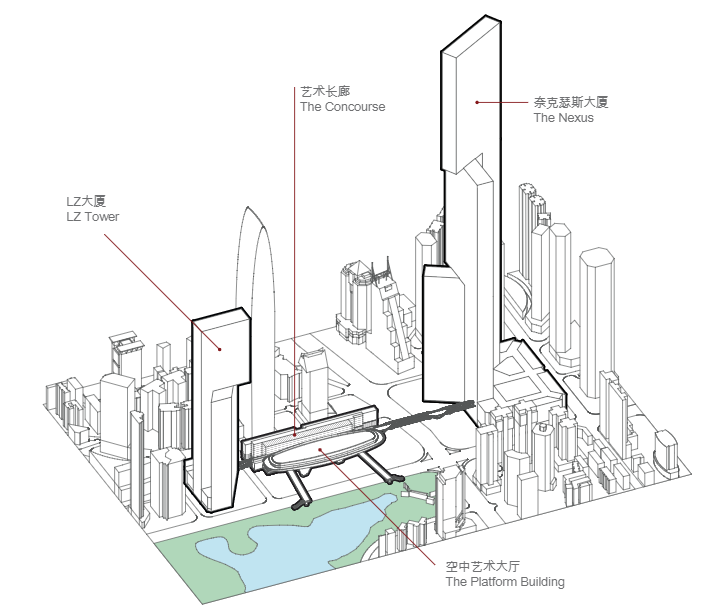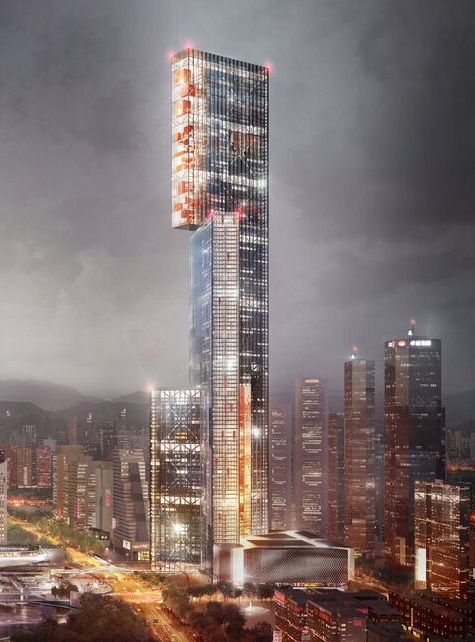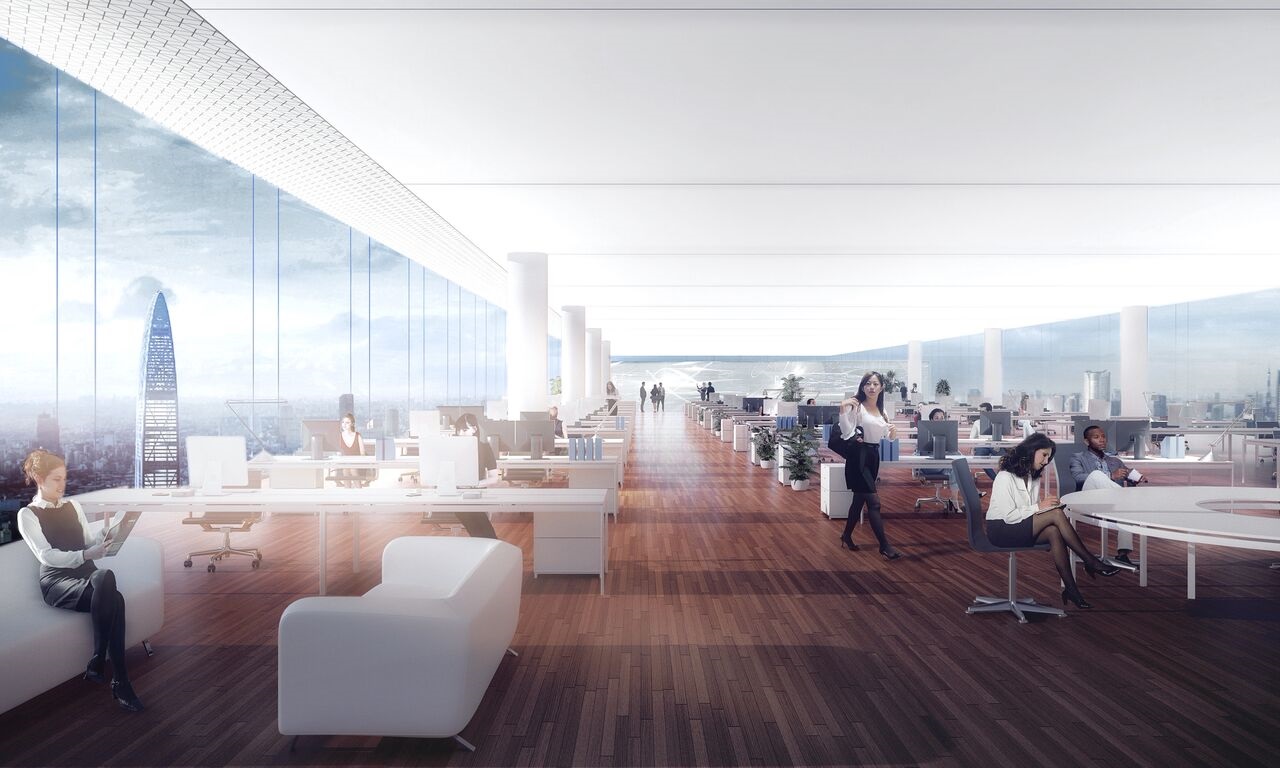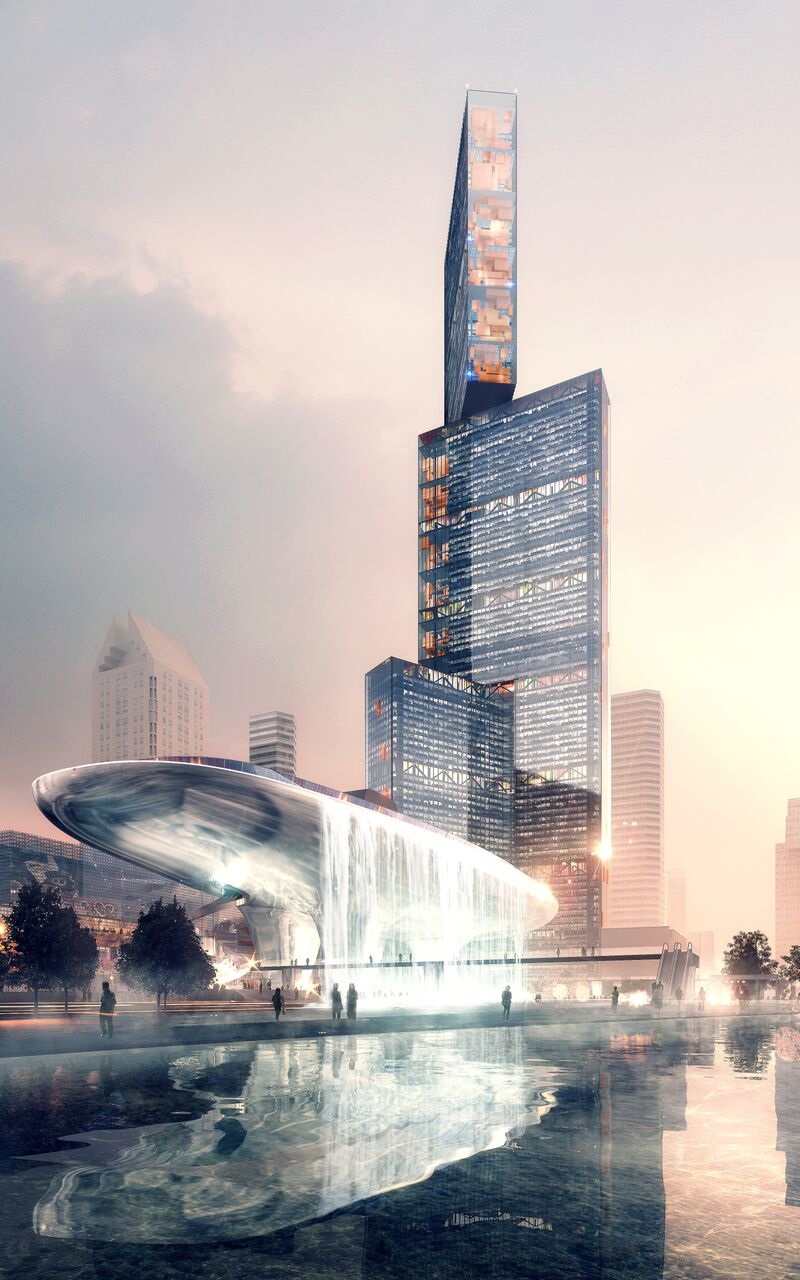Nexus
Contents |
[edit] Introduction
In February 2016, London-based PLP Architecture unveiled their masterplans for Chinese project 'Nexus' that promises to transform the possibilities of skyscraper design.
Proposed for an undisclosed site in the Pearl River Delta, China, the concept for the structure is a supertall tower composed of three rotated, interlocking volumes. It is presented as an alternative to the high-rise point tower typology where a large central core is surrounded by usable space.
As PLP state in the project brochure, ‘In these kinds of buildings, the usual rich mix of internal spatial qualities: flexibility, views, and vertical movement are sacrificed to create an economy of scale of uniformly repeated floors with only minor variations in geometry in order to sculpt an external shape.
‘To confront this tendency Nexus starts by looking at how architecture is occupied and lived from within, favouring the users who daily inhabit the structure. If the aim is to create a series of spaces that offer flexible conditions capable of responding to the needs of each tenant – rather than adapting office practices to the constraints of an inflexible floorplan – then the relation between core and building needs to be reformulated.’
[edit] Structure
The building, with a proposed total height of 595m, is formed by three wings. The structure works as an outrigger - a centrally-located gravity core supported laterally by three perimeter cores that provide stability. The central and perimeter cores are coupled together by trusses located at the MEP/refuge floors.
The idea is that all the corewalls and columns act together to transmit the gravity load to the foundation. With the structural elements placed at the outermost locations of the tower, the structural system becomes more effective and efficient in resisting the lateral wind and seismic loading. Leaving aside the idea of a single object and instead breaking the building down into several volumes of the same structure, combined to create a solution similar to a tripod, problems of stability are reduced.
The lower wing of 44 floors is rotated to get the best views of the park nearby, while the middle wing raised to 83 floors is rotated towards the business district of the city, and the upper wing up to 124 floors is orientated to get the best views of the mountains.
Together, the three parts form a propeller-like configuration with three equidistant axes, non-hierarchical in plan.
(Image copyright - Tegmark)
[edit] Building in-use and sustainability
The Nexus building is primarily for office use, but it has a retail podium of 8 storeys, and a 14 storey signature hotel at the top.
Because of its height, vertical transport relies on shuttle lifts operating in a way similar to a metro system - not on demand but on a determined frequent schedule.
The configuration promotes rhythms of occupation that are more typical in mid-rise buildings but unlikely to be found in traditional high-rise buildings.
The relatively narrow floors arranged in the Y-shaped configuration, provide environments filled with extraordinary levels of daylight and spectacular double aspect views. The designers believe that this, together with the integration of a hybrid ventilation system within the high-performance building envelope, will help make the Nexus building the first structure of its kind to achieve high levels of passive 'green' design.
(Image copyright - Vyonyx)
[edit] Passive design
One of the primary design goals in shaping the orientation and formation of the Nexus building is minimising solar heat load in order to reduce energy use. The height and orientation of the three volumes that make up the building allows four-fifths of the envelope to be shaded or self-shaded from the low western sun. To further mitigate western sun exposure, the façade is striated with a saw-tooth pattern that points away from the building. On select envelopes the short surface of this pattern is solid whilst moveable panels can fold out at peak afternoon hours to act as additional sun barriers.
[edit] The Platform for Contemporary Arts
The main volume of the building is a platform elevated to a height of approximately 35 m. The building is supported via three legs which provide both lateral stability and vertical support for the building. A concrete frame/steel truss structure with mega-frame system will form the outer building hull and the large span cantilevers.
The platform is designed to be a modern theatre facility, with 1,700 seats, music hall, multi-purpose performance space and multiplex.
The building is lifted off the ground to create a floating platform freeing up the space underneath for public use. The landscape of the park is extended into this space to connect to the west and, as the platform rises upwards, water is released cascading back down towards the park.
(Image copyright - Luxigon)
Content for this article was provided by PLP Architecture.
[edit] Find out more
[edit] Related articles on Designing Buildings Wiki
- 7 Engineering Wonders of the world.
- 9 of the world’s most impressive structures.
- Building of the week series.
- Concept architectural design.
- D'Leedon, Singapore.
- Empire State Building.
- JTI Headquarters, Geneva.
- Kaplan North Masterplan Complex.
- Megatall.
- Millennium Dome.
- New York Horizon.
- Novotown.
- Shanghai Tower.
- Skyscraper.
- St. Basil's Cathedral.
- Tallest buildings in the world.
- The history of fabric structures.
- The Mile.
- The Shard.
[edit] External references
Featured articles and news
A change to adoptive architecture
Effects of global weather warming on architectural detailing, material choice and human interaction.
How big is the problem and what can we do to mitigate the effects?
Overheating guidance and tools for building designers
A number of cool guides to help with the heat.
The UK's Modern Industrial Strategy: A 10 year plan
Previous consultation criticism, current key elements and general support with some persisting reservations.
Building Safety Regulator reforms
New roles, new staff and a new fast track service pave the way for a single construction regulator.
Architectural Technologist CPDs and Communications
CIAT CPD… and how you can do it!
Cooling centres and cool spaces
Managing extreme heat in cities by directing the public to places for heat stress relief and water sources.
Winter gardens: A brief history and warm variations
Extending the season with glass in different forms and terms.
Restoring Great Yarmouth's Winter Gardens
Transforming one of the least sustainable constructions imaginable.
Construction Skills Mission Board launch sector drive
Newly formed government and industry collaboration set strategy for recruiting an additional 100,000 construction workers a year.
New Architects Code comes into effect in September 2025
ARB Architects Code of Conduct and Practice available with ongoing consultation regarding guidance.
Welsh Skills Body (Medr) launches ambitious plan
The new skills body brings together funding and regulation of tertiary education and research for the devolved nation.
Paul Gandy FCIOB announced as next CIOB President
Former Tilbury Douglas CEO takes helm.
UK Infrastructure: A 10 Year Strategy. In brief with reactions
With the National Infrastructure and Service Transformation Authority (NISTA).
Ebenezer Howard: inventor of the garden city. Book review.
Airtightness Topic Guide BSRIA TG 27/2025
Explaining the basics of airtightness, what it is, why it's important, when it's required and how it's carried out.

























